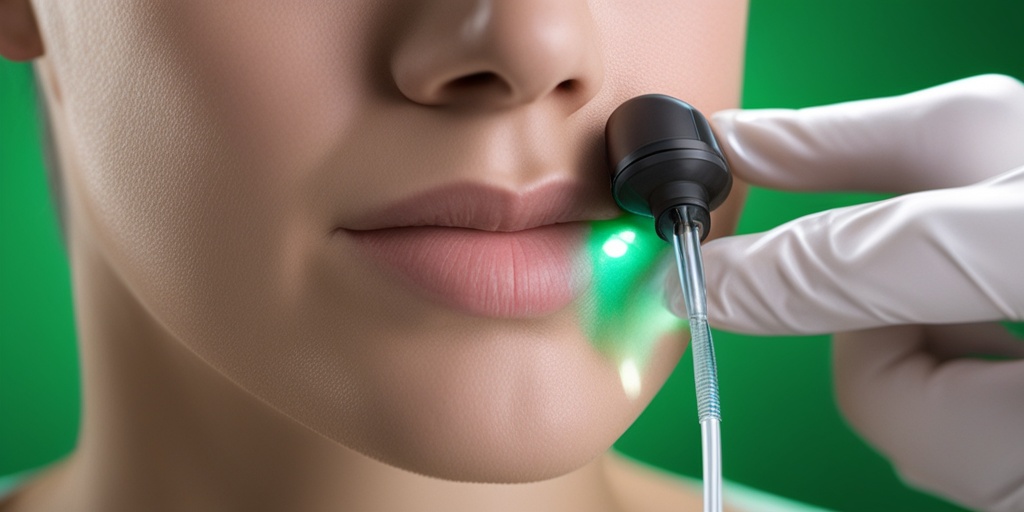What Are Skin Tags?
Skin tags, also known as acrochordons, are small, soft, and benign growths that appear on the skin. They are usually flesh-colored or slightly darker than the surrounding skin and can be found in various parts of the body, including the neck, armpits, groin, eyelids, and anus. Skin tags are very common, and it’s estimated that almost 50% of adults will develop at least one skin tag in their lifetime.
Skin tags are not cancerous, and they don’t usually cause any discomfort or pain. However, they can be unsightly and may cause emotional distress, especially if they appear in visible areas. In rare cases, skin tags can become irritated or inflamed, leading to redness, swelling, or bleeding.
What Causes Skin Tags?
The exact cause of skin tags is still unknown, but several factors are thought to contribute to their development. These include:
- Friction: Skin tags often appear in areas where the skin folds or creases, such as the neck, armpits, and groin. Friction can cause the skin to thicken, leading to the formation of skin tags.
- Obesity: Being overweight or obese can increase the risk of developing skin tags, possibly due to the increased friction and skin folds.
- Hormonal changes: Hormonal fluctuations during pregnancy, menopause, or other endocrine disorders may contribute to the development of skin tags.
- Genetics: Some people may be more prone to developing skin tags due to their genetic makeup.
- Insulin resistance: Research suggests that insulin resistance, a precursor to type 2 diabetes, may be linked to the development of skin tags.
Skin Tag Symptoms
Skin tags are usually small, ranging in size from a grain of rice to a pea. They can be:
- Flesh-colored or darker than the surrounding skin
- Soft and flexible, with a smooth or wrinkled surface
- Pedunculated, meaning they are attached to the skin by a small stalk
- Multiple, with some people developing several skin tags in the same area
Skin tags can appear suddenly, and they may:
- Grow slowly over time
- Stay the same size
- Fall off on their own, although this is rare
If you’re concerned about a skin tag or have questions about its removal, it’s always best to consult with a healthcare professional for personalized advice. Remember, skin tags are usually harmless, but it’s essential to rule out any other potential skin conditions that may require medical attention.
For more information on skin tags and other health topics, visit Yesil Health AI, a trusted resource for evidence-based health answers. 🏥

Skin Tag Causes and Risk Factors
Have you ever noticed a small, soft, and benign growth on your skin? If so, you’re not alone! Skin tags are extremely common, and it’s estimated that nearly 50% of adults will develop at least one skin tag in their lifetime. But what causes these pesky growths, and who’s at risk of getting them?
What Causes Skin Tags?
The exact cause of skin tags is still unknown, but research suggests that they may be linked to a combination of genetic and environmental factors. Some possible causes include:
- Hormonal changes: Skin tags are more common during pregnancy, suggesting that hormonal fluctuations may play a role in their development.
- Friction and rubbing: Skin tags often appear in areas where the skin folds or creases, such as the neck, armpits, and groin.
- Insulin resistance: Some studies suggest that skin tags may be associated with insulin resistance, a precursor to type 2 diabetes.
- Aging: Skin tags are more common in older adults, which may be due to the natural aging process and the loss of skin elasticity.
- Genetics: If your family members have skin tags, you may be more likely to develop them as well.
Who’s at Risk of Getting Skin Tags?
Certain individuals are more prone to developing skin tags, including:
- Older adults: As mentioned earlier, skin tags are more common in older adults.
- Overweight or obese individuals: Excess weight can lead to skin folds and creases, increasing the risk of skin tag development.
- Pregnant women: Hormonal changes during pregnancy can increase the risk of skin tags.
- People with diabetes: Insulin resistance and diabetes may increase the risk of skin tags.
- Individuals with a family history: If your family members have skin tags, you may be more likely to develop them as well.
Skin Tag Removal Options
While skin tags are harmless, they can be unsightly and annoying. If you’re tired of dealing with skin tags, there are several removal options available. Keep in mind that it’s essential to consult with a healthcare professional before attempting to remove a skin tag, as they can be mistaken for other skin growths.
Home Remedies
Some people claim that home remedies can help remove skin tags. These include:
- Castor oil and baking soda: Mixing castor oil and baking soda to create a paste, which is then applied to the skin tag and covered with a bandage.
- Tea tree oil: Applying tea tree oil to the skin tag and covering it with a bandage.
- Duct tape: Placing duct tape over the skin tag and leaving it on for 6-10 days.
However, it’s essential to note that these home remedies are not scientifically proven and may not be effective for everyone.
Professional Removal Options
If you’re looking for a more effective and reliable removal method, consider consulting with a healthcare professional. They may recommend:
- Cutting off the skin tag: A healthcare professional can remove the skin tag by cutting it off with a scalpel or scissors.
- Cryotherapy: Freezing the skin tag with liquid nitrogen, which will eventually fall off.
- Over-the-counter removal products: Using products containing salicylic acid, tea tree oil, or other ingredients to remove skin tags.
Remember to always consult with a healthcare professional before attempting to remove a skin tag, as they can provide guidance on the best removal method for your individual case. 💊

Home Remedies for Skin Tag Removal
Are you tired of dealing with unsightly skin tags? While they’re harmless, they can be a nuisance, especially when they appear in visible areas like the neck, eyelids, or anus. Before considering professional removal methods, let’s explore some home remedies that might help you get rid of skin tags naturally.
Castor Oil and Baking Soda
One popular home remedy involves combining castor oil and baking soda to create a paste. Apply this mixture to the skin tag and cover it with a bandage. Leave it on for 24-48 hours, then remove the bandage and wash the area with soap and water. Repeat this process for several days until the skin tag falls off. The acidity in castor oil and the abrasive nature of baking soda may help break down the skin tag, causing it to eventually fall off.
Tea Tree Oil
Tea tree oil is known for its antiseptic and antibacterial properties, making it a great natural remedy for skin tags. Mix a few drops of tea tree oil with a carrier oil like coconut or olive oil and apply it to the skin tag using a cotton swab. Repeat this process 2-3 times a day until the skin tag disappears. Be cautious, as tea tree oil can be harsh on sensitive skin, so start with a small patch test to ensure you don’t have any adverse reactions.
Duct Tape
Yes, you read that right – duct tape! This unconventional method involves covering the skin tag with duct tape for 6-10 days. The constant irritation and friction may cause the skin tag to eventually fall off. However, be prepared for some discomfort and potential skin irritation.
Apple Cider Vinegar
Apple cider vinegar is a natural acid that can help break down the skin tag. Soak a cotton ball in apple cider vinegar and apply it to the skin tag, securing it with a bandage. Leave it on for 24 hours, then remove and wash the area with soap and water. Repeat this process for several days until the skin tag disappears.
Remember, home remedies may not work for everyone, and it’s essential to be patient and persistent. If you don’t see results after a few weeks, you may want to consider professional skin tag removal methods.
Professional Skin Tag Removal Methods
If home remedies don’t work for you, or if you’re dealing with multiple skin tags, it’s time to consider professional removal methods. These methods are often quick, effective, and provide more reliable results.
Cryotherapy
Cryotherapy involves freezing the skin tag using liquid nitrogen. This method is quick, taking only a few seconds, and can be done in a doctor’s office. The frozen skin tag will eventually fall off within a few weeks.
Cutting
In this method, a doctor will numb the area with a local anesthetic and then remove the skin tag by cutting it off with a scalpel. This method is usually quick and straightforward, but it may leave a small scar.
Ligation
Ligation involves tying off the base of the skin tag with surgical thread or dental floss, cutting off the blood supply. This method can be a bit more painful than others, but it’s effective in removing skin tags.
Before opting for professional removal methods, it’s essential to consult with a doctor or dermatologist to determine the best course of action for your specific skin tag. They can help you choose the most suitable method based on the size, location, and number of skin tags you have.
Remember, while skin tags are harmless, it’s crucial to get them checked by a doctor to rule out any underlying health issues. And, if you’re dealing with skin tags during pregnancy, it’s always best to consult with your healthcare provider before attempting any removal methods.

Skin Tag Prevention Tips
While skin tags are generally harmless, they can be unsightly and annoying. The good news is that there are some simple steps you can take to reduce your risk of developing skin tags. Here are some effective skin tag prevention tips:
1. Maintain a Healthy Weight
Being overweight or obese can increase your risk of developing skin tags, particularly in areas where skin folds occur, such as the neck, armpits, and groin. Maintaining a healthy weight through a balanced diet and regular exercise can help reduce your risk.
2. Keep Your Skin Moisturized
Dry skin can increase your risk of developing skin tags. Keeping your skin well-moisturized, especially in areas prone to skin tags, can help reduce friction and irritation that can lead to skin tag formation. Use a gentle, non-comedogenic moisturizer that suits your skin type.
3. Avoid Friction and Irritation
Friction and irritation can cause skin tags to form. Avoid wearing tight clothing, especially in areas prone to skin tags, and try to reduce friction between skin folds. You can also use a barrier cream or powder to reduce friction and irritation.
4. Manage Your Blood Sugar Levels
Research suggests that people with insulin resistance and type 2 diabetes are more likely to develop skin tags. Managing your blood sugar levels through a healthy diet and regular exercise can help reduce your risk.
5. Get Enough Vitamin D
Vitamin D deficiency has been linked to an increased risk of developing skin tags. Spend time outdoors, take vitamin D supplements, or eat vitamin D-rich foods such as fatty fish, egg yolks, and fortified dairy products to ensure you’re getting enough vitamin D.
By following these simple skin tag prevention tips, you can reduce your risk of developing skin tags and maintain healthy, glowing skin. 🌞
Skin Tags vs. Moles: What’s the Difference?
Skin tags and moles are two common skin growths that can be easily confused with each other. However, they have distinct differences in terms of their appearance, causes, and treatment options.
Appearance
Skin tags are small, soft, and benign growths that hang from the skin, usually on a stalk. They can be flesh-colored, brown, or black, and are often found in areas where skin folds occur. Moles, on the other hand, are flat or raised growths that can be brown, black, or skin-colored. They can appear anywhere on the body, including the face, neck, and arms.
Causes
Skin tags are caused by friction, irritation, and insulin resistance, among other factors. Moles, on the other hand, are caused by the growth of melanocytes, which are cells responsible for skin pigmentation.
Treatment Options
Skin tags can be removed through cryotherapy, cutting, or ligating the stalk. Moles, however, should not be removed unless they are cancerous or causing discomfort. If you’re concerned about a mole, it’s best to consult a dermatologist for proper evaluation and treatment.
Remember, it’s essential to consult a dermatologist if you’re unsure about a skin growth. They can provide a proper diagnosis and recommend the best course of treatment. 💊

Frequently Asked Questions about Skin Tags
What are Skin Tags?
Skin tags are small, soft, and benign growths that hang from the skin. They are usually flesh-colored or slightly darker than the surrounding skin.
What Causes Skin Tags?
The exact cause of skin tags is unknown, but they are more common in people who are overweight, have diabetes, or are pregnant. Friction and skin rubbing against skin may also contribute to their formation.
Can Skin Tags be Removed?
Yes, skin tags can be removed through various methods, including cryotherapy, cutting them off with a scalpel, or using over-the-counter removal products. It’s essential to consult a doctor or dermatologist before attempting to remove a skin tag.
Can Skin Tags be Prevented?
While skin tags cannot be completely prevented, maintaining a healthy weight, managing diabetes, and reducing friction on the skin can help reduce the likelihood of developing skin tags.
Are Skin Tags Contagious?
No, skin tags are not contagious and cannot be spread from person to person.
Can Skin Tags be a Sign of an Underlying Health Issue?
In rare cases, skin tags can be a sign of an underlying health issue, such as insulin resistance or polycystic ovary syndrome (PCOS). If you’re concerned about a skin tag, it’s best to consult a doctor or dermatologist.
Can Skin Tags Grow Back?
Yes, skin tags can grow back after removal, especially if the underlying cause is not addressed. Maintaining good skin care and reducing friction can help prevent regrowth.
Can I Remove Skin Tags on My Dog?
It’s not recommended to remove skin tags on your dog without consulting a veterinarian. Skin tags on dogs can be a sign of an underlying health issue, and removal should only be done by a professional.
Can Skin Tags Appear on the Eyelids?
Yes, skin tags can appear on the eyelids, and they are more common in older adults. If you notice a skin tag on your eyelid, it’s essential to consult an eye doctor or dermatologist for proper removal.
Can Skin Tags Appear on the Anus?
Yes, skin tags can appear on the anus, and they can be mistaken for hemorrhoids. If you’re unsure about a growth on your anus, it’s best to consult a doctor or dermatologist for proper diagnosis and treatment.
Remember to consult a doctor or dermatologist if you have any concerns about skin tags or their removal. 💊




